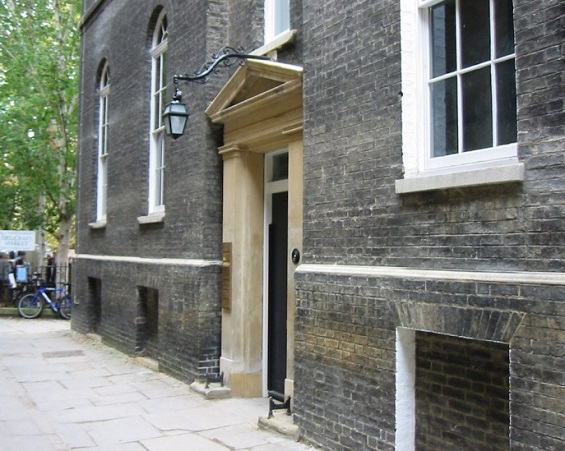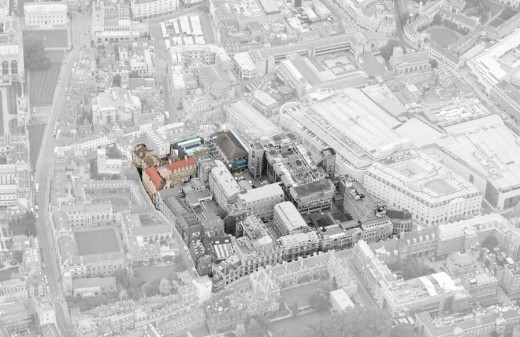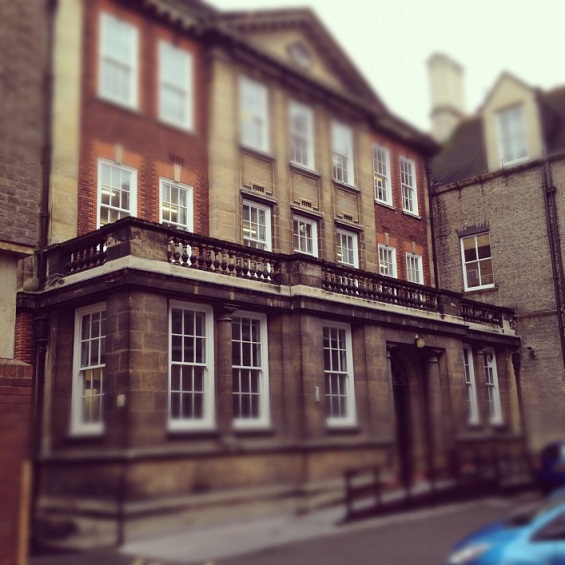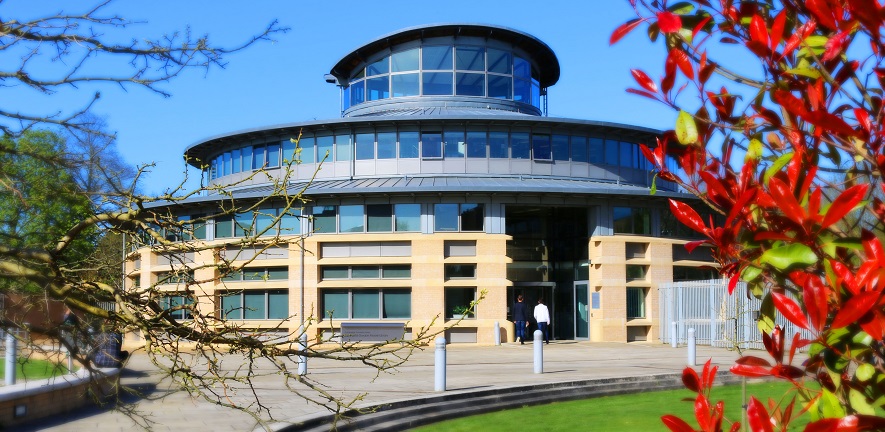Historical timeline of the Betty and Gordon Moore Library
1819 – Formation of the Cambridge Philosophical Society (CPS).
1820 – First lists of library acquisitions collected for the library by the Fellows of the Society.
1821 – The Society formally agrees to establish a reading room, initially in rooms in Sidney Street and then in purpose built premises (CPS House) in All Saints Passage (now occupied by the Bridge Street Surgery).

1865 - The Cambridge Philosophical Society's house was put up for sale in 1865. This posed a problem for the "Philosophical Library", which was by then of sufficient importance to the scientific departments for the University to be concerned that it should not be dispersed. By a Grace of 8 June 1865 the use of a room on the New Museums Site was granted to the Society to house the library.

1880 – The collection had grown to 5000 volumes and was becoming unmanageable for the Society in the cramped premises they currently occupied. The Society lacked means to administer and staff the library adequately, room for expansion was needed, the lack of official status made planning for the future difficult.
1881 - A need for a central scientific library (a recurring theme in this history) was expressed in the correspondence between the Society and the University that concluded with a formal agreement in 1881 (Grace of 7 June 1881). By this agreement between the University and the Society, the University undertook the responsibility of housing and staffing the library in return for its use being extended to all members of the University, irrespective of whether they joined the Society. The library was to be administered by a joint committee of the University and the Society in equal proportions.
1935 - The Philosophical Library moved into the Arts School Building. Despite its unique status the library continued to be the focus of successive but ultimately unsuccessful campaigns to establish a "University Science Library" along the lines of the Radcliffe Science Library at Oxford. Despite this the Library was clearly seen as a co-ordinating hub for departmental science libraries. The precursor of today's online catalogue/discover tool (iDiscover), providing comprehensive information of the University's holdings, was the original Union Catalogue project undertaken by staff based at the library.

1967- The Philosophical Library is renamed The Scientific Periodicals Library (SPL) in acknowledgement to its extensive journal collections.
In addition to these collections the library also housed the University’s photocopying service and telex office. The latter of these became the University Telex & Fax Service. Both services were staffed and managed by the library until the early 1990s.The proliferation of fax machines across the University, the demise of telex and the increase in use of e-mail, lead to the gradual cessation of the fax service. Equally the introduction of e-journals and the cheapness of desktop printing lead to a dramatic reduction in demand for a centrally-located photocopying service. Whilst these services ultimately declined as a result of changing needs and technology; their presence in the SPL demonstrated the value of its geographic location in the provision of non-traditional library services, within a library environment, to the wider University.
1976 - The SPL becomes a dependent library (branch) of Cambridge University Library (UL). This provided essential stability and the opportunity to call directly on the expertise of staff within the University Library. Shortage of space within the Arts School building, however, continued to be a major concern.
1989 - The SPL absorbed the collections of the former Department of Applied Biology. This collection remains one of the most complete archive collections of literature on agriculture and related topics in the country.
1990s - Negotiations began regarding the establishment of a library at the proposed Centre for Mathematical Sciences (CMS) at Clarkson Road that would include material from the SPL.
1995 - The Library Syndicate approve plans for a completely new approach to the distribution of the UL's collections and services. Whilst biological, chemical, earth and environmental subjects would continue to be catered for in central Cambridge, initially at least, through the existing SPL, the plan was for the physical sciences, mathematics and technology, to eventually be served by a library on the CMS site close to the West Cambridge development.

2001 - Made possible by the gift of £7.5 million by Dr Gordon E. Moore (the founder and chairman emeritus of Intel Corporation) and his wife Betty, the opening of the Betty and Gordon Moore Library marks a new stage in the development of central library services. The Moore Library drew print collections from the SPL, the University Library at West Road and completely absorbed the two mathematics departmental collections; DAMTP and DPMMS.
2004 - In recognition of the SPL's collection profile the Library Syndicate requests the General Board's approval of the re-naming of the library as Cambridge University Library, Central Science Library.
2005 - Central Science Library begins taking monographs received through Legal Deposit and purchasing to be in keeping with the Library’s collection development policy.
2015 – As a result of plans to redevelop the New Museums Site and the direct impact this had for the Arts School building, the Central Science Library was closed down. Its journal collections, including those housed in the Austin Building, were placed into long term off-site storage. The monographic collections of the Central Science Library were moved into the Moore Library.
The Moore Library now holds Cambridge University Library's working collections in mathematics, physics, astronomy, computer, materials, engineering, biological, chemical, earth and environmental sciences, including relevant material received under Legal Deposit Legislation.
For an interactive overhead view of the Library and the Mathematical Sciences site, click here.
![[IMAGE = Library Drone Shot]](https://moore.libraries.cam.ac.uk/files/library_drone_shot_c_x-copters_aerial_media.jpg)
Drone photography © X-Copters Aerial Media
Design
The building was designed by Edward Cullinan Architects, an income sharing co-operative of architects who design within the developing formal tradition of modern architecture whilst responding to the demands of site, sustainability and environment. Although the Library is a freestanding building with its own character, it is also an element within the architect's plan for the Centre for Mathematical Sciences site as a whole.
The circular design is reminiscent of the library designed by Thomas Jefferson at the University of Virginia in 1817. Jefferson believed the layout liberating and conducive to both private study and the cross fertilization of ideas. Revisited for the 21st century, the design provides space, light, flexibility in use, and environmentally sensitive natural ventilation and cooling.
The colour scheme of the library was inspired by the painting Cantus Firmus by Bridget Riley (b. 1931). Chairs in the new acquisitions area, the curved sofas, and folding tables in study rooms and offices are designed by Eileen Gray (1878-1976).
Facts and figures
| Gross internal floor area | 3320 square metres |
| Length of shelving | 9000 linear metres |
| Reader spaces | 265 |
| Computer workstations | 16 (plus wireless access) |
| Current periodicals | 1,100 titles |
| Current stock | 51,000 monographs, 72,000 journal volumes |
| Book budget | c. £18,000 |
| Designed by | Edward Cullinan Architects |
| Main construction contractors | Sir Robert McAlpine Ltd |
| Construction timescale | February 2000 - July 2001 |

 Read our latest news
Read our latest news Follow us on Instagram
Follow us on Instagram Subscribe to our YouTube channel
Subscribe to our YouTube channel YouTube
YouTube